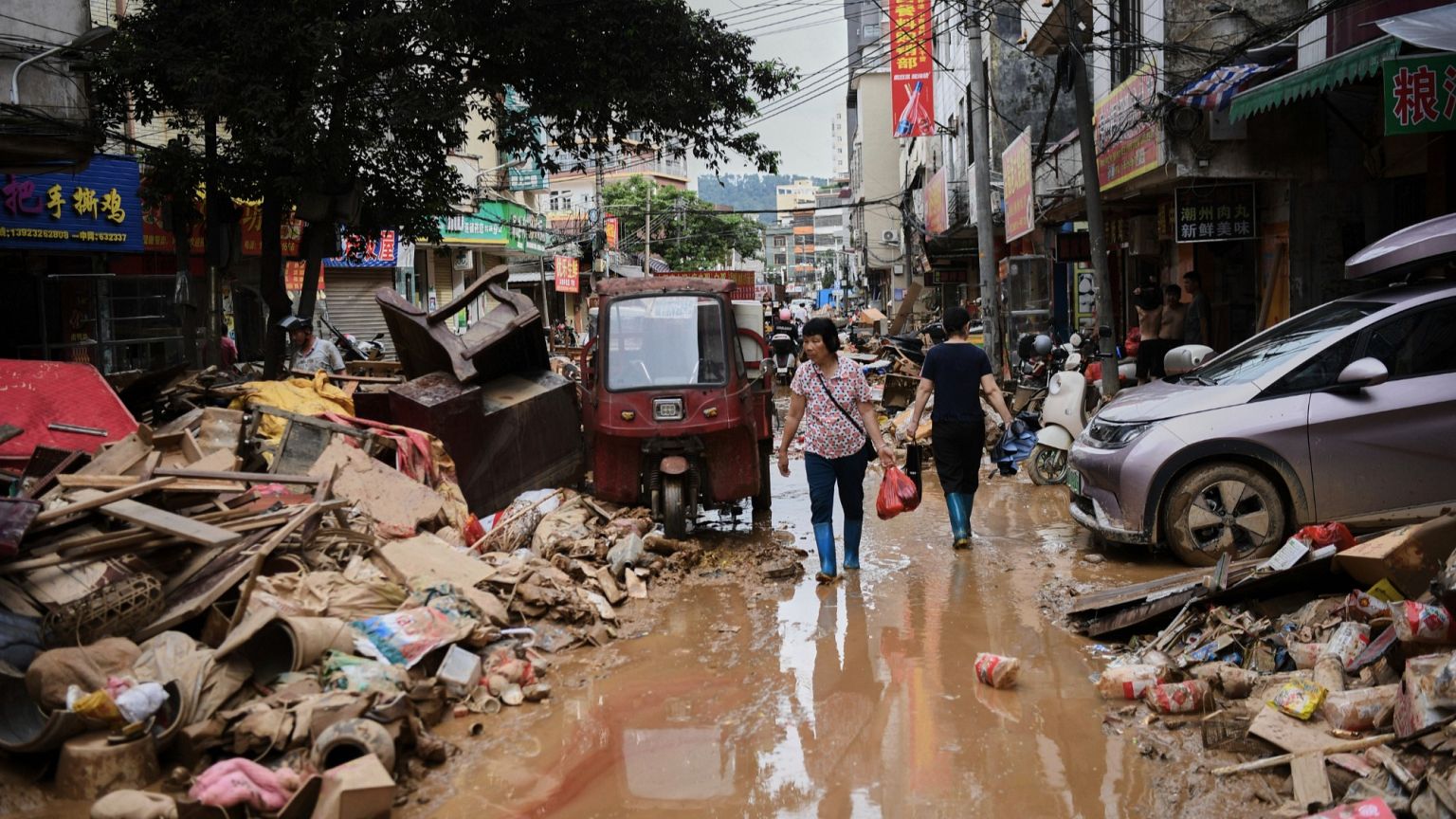Health
China Intensifies Response to Chikungunya Virus Outbreak

An outbreak of the chikungunya virus in China has led to over 7,000 reported cases, prompting the government to implement strict preventive measures. The situation is particularly concentrated in the manufacturing hub of Foshan, located in Guangdong province, which has seen a significant rise in infections. Authorities are taking aggressive action, including the use of drones and clouds of disinfectant, targeting areas where mosquitoes breed.
As of March 2024, the Chinese government has rolled out a series of initiatives to combat the mosquito-borne virus. Citizens are being urged to eliminate standing water from their surroundings, with fines of up to 10,000 yuan (approximately €1,208) for non-compliance. This includes emptying containers such as flower pots and bottles that can collect rainwater. These measures echo the strict tactics used during the COVID-19 pandemic, with workers seen spraying disinfectant in public areas, construction sites, and residential neighborhoods.
The chikungunya virus, known to cause fever and joint pain, poses a heightened risk to vulnerable groups, including the elderly and those with pre-existing health conditions. According to health officials, the number of new cases appears to be slowly declining, though the outbreak continues to strain public health resources.
Internationally, the outbreak has not gone unnoticed. The United States has issued a travel advisory against visiting Guangdong province, which includes major cities like Dongguan. Countries such as Brazil, France, and Italy have also reported cases this year, highlighting the broader implications of the virus beyond China’s borders.
Heavy rains and elevated temperatures have exacerbated the situation, creating ideal breeding conditions for mosquitoes. In response, Chinese authorities have sought innovative methods to control the population of these insects. Efforts include introducing fish that consume mosquito larvae and larger mosquitoes that can prey on the virus carriers.
In the face of this public health crisis, the Chinese government has convened national meetings to discuss protocols aimed at eliminating the outbreak. These actions reflect a commitment to not only manage the current health threat but also to mitigate potential public and international criticism.
Patients in Foshan are now required to remain hospitalized for a minimum of one week, while initial home quarantine measures were briefly enforced before being lifted, as the virus is not transmitted between humans. The government’s swift and coercive measures underscore its determination to control the chikungunya outbreak and protect public health.
-

 Entertainment2 months ago
Entertainment2 months agoIconic 90s TV Show House Hits Market for £1.1 Million
-

 Lifestyle4 months ago
Lifestyle4 months agoMilk Bank Urges Mothers to Donate for Premature Babies’ Health
-

 Sports3 months ago
Sports3 months agoAlessia Russo Signs Long-Term Deal with Arsenal Ahead of WSL Season
-

 Lifestyle4 months ago
Lifestyle4 months agoShoppers Flock to Discounted Neck Pillow on Amazon for Travel Comfort
-

 Politics4 months ago
Politics4 months agoMuseums Body Critiques EHRC Proposals on Gender Facilities
-

 Business4 months ago
Business4 months agoTrump Visits Europe: Business, Politics, or Leisure?
-

 Lifestyle4 months ago
Lifestyle4 months agoJapanese Teen Sorato Shimizu Breaks U18 100m Record in 10 Seconds
-

 Politics4 months ago
Politics4 months agoCouple Shares Inspiring Love Story Defying Height Stereotypes
-

 World4 months ago
World4 months agoAnglian Water Raises Concerns Over Proposed AI Data Centre
-

 Sports4 months ago
Sports4 months agoBournemouth Dominates Everton with 3-0 Victory in Premier League Summer Series
-

 World4 months ago
World4 months agoWreckage of Missing Russian Passenger Plane Discovered in Flames
-

 Lifestyle4 months ago
Lifestyle4 months agoShoppers Rave About Roman’s £42 Midi Dress, Calling It ‘Elegant’









